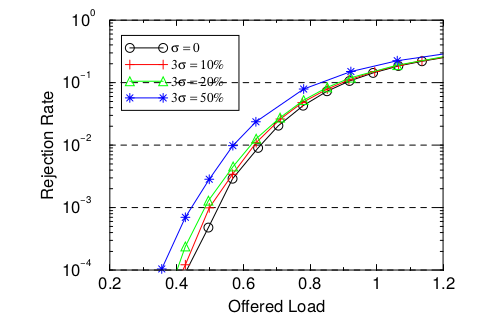
Links
Abstract
Application-level multicast is a new mechanism for enabling multicast in the Internet. Driven by the fast growth of network audio/video streams, application-level multicast has become increasingly important for its efficiency of data delivery and its ability of providing value-added services to satisfy application specific requirements. From a network design perspective, application-level multicast differs drastically from traditional IP multicast in its network cost model and routing strategies. We present these differences and formulate them as a network design problem consisting of two parts: one is bandwidth assignment in the overlay network, the other is load-balancing multicast routing with delay constraints. We use analytical methods and simulations to show that our design solution is a valid and cost-effective approach. Simulation results show that we are able to achieve network utilization within 10% of the best possible utilization while keeping the session rejection rate low.
BibTeX (Download)
@inproceedings{Shi2001Dimensioning,
title = {Dimensioning Server Access Bandwidth and Multicast Routing in Overlay Networks},
author = {Sherlia Shi and Jon Turner and Marcel Waldvogel},
url = {https://netfuture.ch/wp-content/uploads/2001/shi01dimensioning.pdf},
year = {2001},
date = {2001-01-01},
urldate = {1000-01-01},
booktitle = {Prceedings of NOSSDAV 2001},
pages = {83-92},
abstract = { Application-level multicast is a new mechanism for enabling multicast in the Internet. Driven by the fast growth of network audio/video streams, application-level multicast has become increasingly important for its efficiency of data delivery and its ability of providing value-added services to satisfy application specific requirements. From a network design perspective, application-level multicast differs drastically from traditional IP multicast in its network cost model and routing strategies. We present these differences and formulate them as a network design problem consisting of two parts: one is bandwidth assignment in the overlay network, the other is load-balancing multicast routing with delay constraints. We use analytical methods and simulations to show that our design solution is a valid and cost-effective approach. Simulation results show that we are able to achieve network utilization within 10% of the best possible utilization while keeping the session rejection rate low.},
keywords = {Multicast, Traffic Engineering},
pubstate = {published},
tppubtype = {inproceedings}
}



